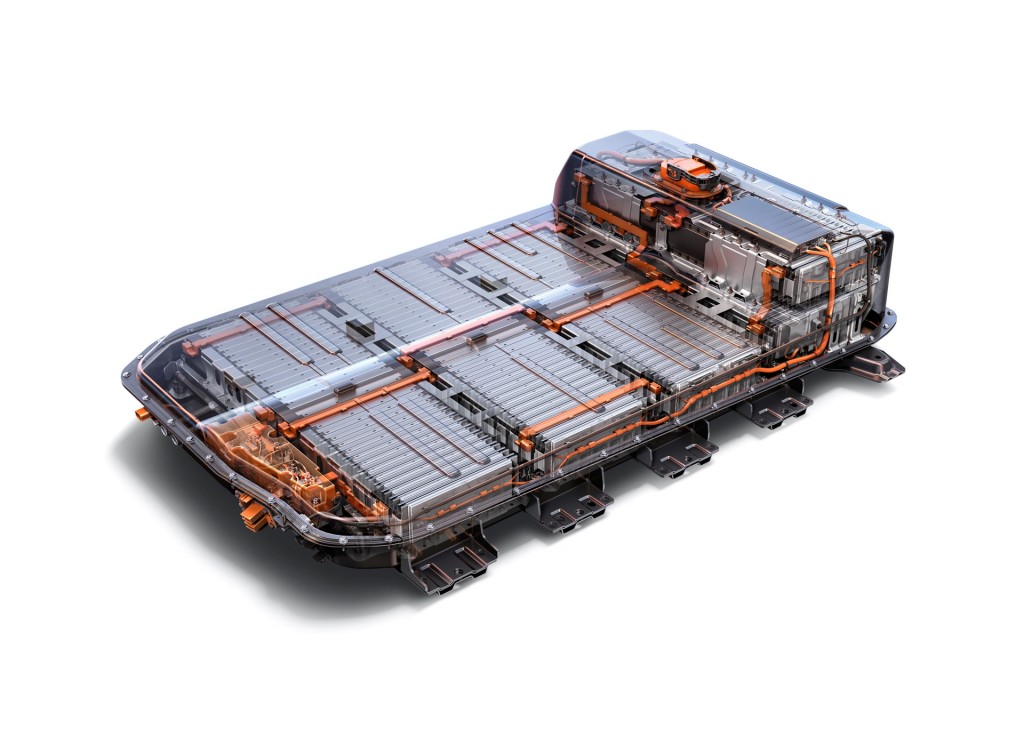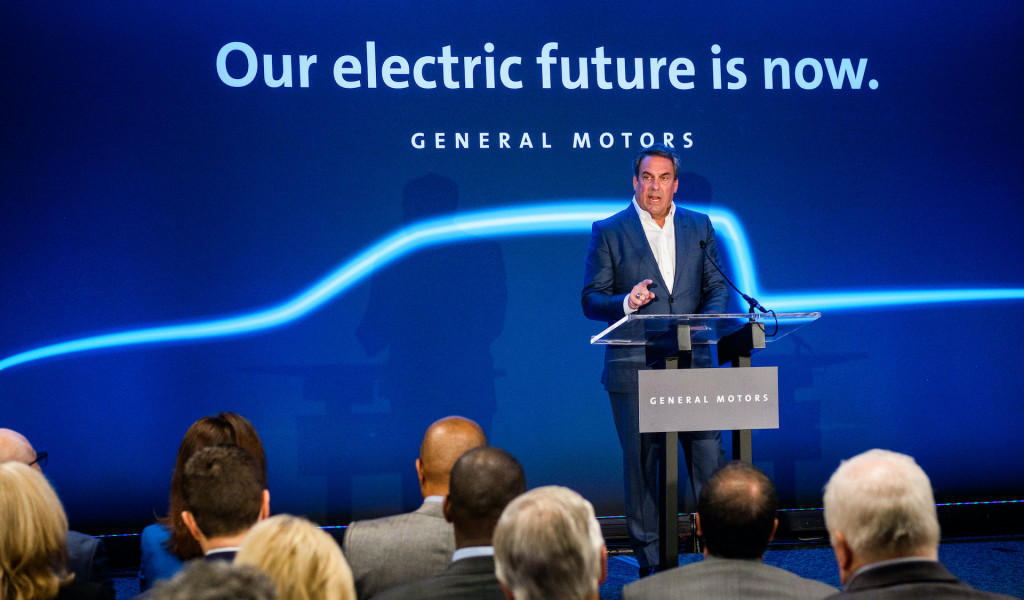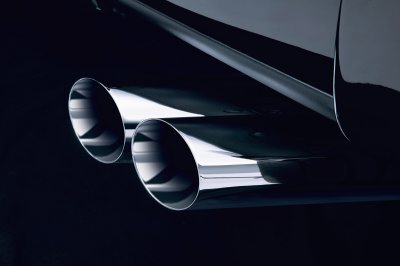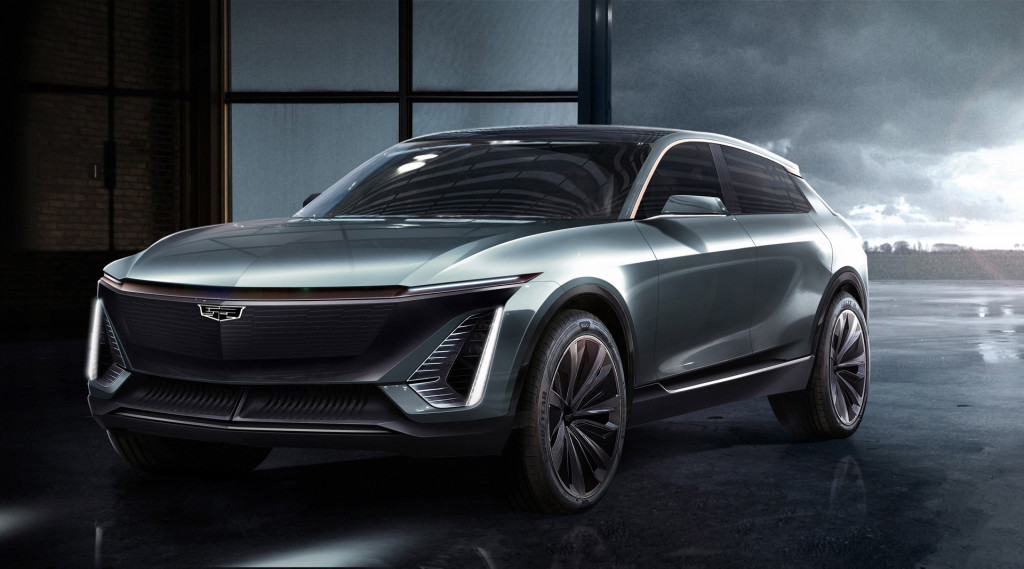When General Motors brought five green-car reporters to Michigan this week to announce its Detroit-Hamtramck plant would produce only electric vehicles, it threw in an Easter Egg: a small-group interview with GM president Mark Reuss.
Scheduled to last only 5 minutes, the fast-paced chat stretched to 20 minutes and covered a broad range of topics.
With a transcript in hand, we’ve boiled down the conversation to nine key points about GM’s present and future electric vehicles.
Battery packs for the Chevy Bolt EV and Volt were “probably over-engineered”
Responding to a question on when electric cars would reach price parity with their internal-combustion counterparts, Reuss suggested the company had learned a huge amount over 10 years about how drivers actually use their cars and how well the battery systems hold up.
“Is (battery capacity) just gonna get bigger now?” Reuss asked to no one in particular. “The answer is no.”
“When we started with the Volt and the Bolt, we probably over-designed those battery packs. I mean, there’s a lot of really cool stuff in them and they may not ever die. We don’t have a lot of warranty (claims) with that stuff, which is beautiful.”

2017 Chevrolet Bolt EV
“But along the way, you learn how to control it, and how people really use it, which—until you do it—you’re really guessing at. So the efficiency you get out of the use of the battery along the way, where you’re decreasing cell cost and size, makes the curve of performance and value even better, independent of cell chemistry.”
In other words, future battery packs will deliver more range from less capacity because GM now knows how to design battery-management systems that deliver the necessary performance without leaving such big margins to cover unknown use cases and general degradation.
We heard this theme not only from Reuss but from our two guides on a tour of the GM Battery Laboratory at its Warren Technical Center. (They were Tim Grewe, director of global battery cell engineering and strategy, and Doug Drauch, lead engineer for battery-test system integration.)

Mark Reuss, GM president, announces Detroit-Hamtramck plant to build electric vehilcles
The EVs coming out of Hamtramck starting in late 2021 will be profitable from the start
“Our next-generation EVs will be profitable from Day One,” Reuss said flatly about the Hamtramck plant. “How much profitability is in there will be scale-driven. (But) there’ll be no losses here; every car that comes out will be profitable.”
GM’s future EVs will span multiple segments, multiple brands, and lots of models
In his prepared remarks at Hamtramck, Reuss alluded to the plant building multiple vehicles, multiple types of vehicles, across many brands. In the interview, he suggested that commitment will be what gets GM's various dealers on board to sell EVs competently.
Responding to a question about the long-standing reluctance of franchised dealerships to sell electric cars, Reuss said, “Two cars does not make a strategy” (referring to the Volt, and then the Bolt EV).
“I showed a group of some of our best dealers, maybe four weeks ago, the electric portfolio in GM. These are some of our very top-volume dealers. And they couldn’t believe the commitment, and the excitement around each one of these entries—which is very different from where we’ve been before.”
“You’ll see it over the next summer,” he promised, “how deep and how far this electric portfolio goes."
![2017 Chevrolet Bolt EV electric cars outside dealership [photo: Patrick Reid] 2017 Chevrolet Bolt EV electric cars outside dealership [photo: Patrick Reid]](https://images.hgmsites.net/lrg/2017-chevrolet-bolt-ev-electric-car-photo-patrick-reid_100605961_l.jpg)
2017 Chevrolet Bolt EV electric cars outside dealership [photo: Patrick Reid]
GM’s new modular electric-vehicle architecture can accommodate small cars to full-size pickup trucks
GM has designed its battery systems, probably at the module level, to accommodate both the pouch cells used in North America by its cell partner LG Chem and the prismatic cells more commonly used in China.
“When we design our new battery packs, we have the ability to create systems actually at a cell level that are able to be configured as a low-floor, low-roof entry; a mid-sized SUV; and a full truck platform.”
“The flexibility to do those orientations and configurations of cells enables a footprint (for electrification),” Reuss said, “that is quite different (than what GM has done to date).”
The new battery architecture is fully global, Reuss said, applicable equally to China and North America. (GM no longer has significant operations in Europe.) The intellectual property, however, is almost entirely developed in Detroit, he noted, not in China.

Future Cadillac long-range electric large luxury utility vehicle (rendering), 2019 Detroit auto sho

Future Cadillac long-range electric large luxury utility vehicle (rendering), 2019 Detroit auto sho

Future Cadillac long-range electric large luxury utility vehicle (rendering), 2019 Detroit auto sho
The upcoming battery-electric pickup truck probably won’t use a “skateboard” chassis
“Do you really think that we should be doing battery-electric trucks off the skateboard?” Reuss asked one journalist. “Do you really think we should be doing, you know, Cadillacs off a skateboard?”
That journalist responded that it seemed to have worked well for Tesla, a gambit Reuss side-stepped by commenting on the unsprung mass of wheel motors, which Tesla does not presently use.
Our takeaway: The “architecture” Reuss is talking about is not vehicle platforms or architectures like Volkswagen’s MEB underpinnings, but more about a set of module systems, battery configurations, and control electronics that can use different cells and cell types. These components give the company global scale to drive down costs enough to make future EVs profitable.

Exhaust tips
The current CAFE regulations favor hybrid vehicles over zero-emission electric cars
Reuss was first asked why GM did not join BMW, Ford, Honda, and VW in cutting a deal on emission regulations with the California Air Resources Board.
Instead, the company joined the Trump Administration in its goal to overturn California’s long-standing legal right to set its own, stricter emission standards separate from national limits.
“The multiples on a business basis in that regulation favor hybrids, okay?” Reuss responded. “I want to go to battery-electric vehicles. (But) you’ve got to look at the multipliers on greenhouse-gas credits, okay? It doesn’t favor battery-electric vehicles in the short term.”
It seems reasonable to assume GM will continue to try to get greenhouse-gas emission standards revised to favor battery-electric vehicles over any vehicles that retain a tailpipe, regardless of how efficiently they use gasoline.

2010 Chevrolet Tahoe Hybrid
Regardless, GM isn’t going to do hybrids or plug-in hybrids. Period.
This was foreshadowed in 2018, when the company announced it would take the Volt plug-in hybrid out of production. Reuss confirmed this, saying simply, “I’m not going to spend money on hybrids.”
Certainly GM’s 10-plus years of conventional hybrid offerings—mild hybrids as well as full hybrid SUVs, pickup trucks, and passenger cars—failed to make a notable dent in the market. They also likely lost the company millions of dollars, perhaps due to the over-engineering Reuss attributed to the Bolt EV and Volt battery packs.
It’s worth noting battery-systems director Tim Grewe said he’s still driving a 2010 Chevrolet Tahoe Hybrid, one of those unsuccessful hybrid full-size SUVs.

2020 Chevrolet Bolt EV, Dismal Nitch, Washington
There will probably be an all-new Chevrolet Bolt EV
Like all GM executives above a certain level, Reuss regularly gets new company vehicles to drive. He recently gave back his mid-engine Chevy Corvette C8 and, he said, is now driving the new 2020 Chevy Bolt EV, whose EPA range rating increased from 238 to 259 miles.
Reuss also off-handedly confirmed that a mid-cycle upgrade for the model will come for the 2021 model year. More interesting, though, was a response during the discussion on dealer enthusiasm.
“The opportunity here with our dealers is to begin with the next Bolt and, um, what comes after the next Bolt, and then what comes after that Bolt…to really change the retail buying experience.”
Our takeaway: The Bolt EV is likely to be completely replaced by a new-generation vehicle for 2023 or 2024. Whether it remains a tall, compact, five-door hatchback, however, is very much to be determined. Perhaps it will be more SUV-like?
We’re still waiting for GM to unveil the long-rumored, all-wheel-drive derivative built on the “BEV2” Bolt EV architecture as well. That will likely be the last vehicle on Bolt underpinnings before the “BEV3” vehicles start arriving next year.

Cadillac electric crossover SUV based on GM BEV3 modular platform
The electric Cadillac SUV to be introduced for 2023 will use a word for its model name, not letters and numbers
“Oh, and by the way,” Reuss added toward the end of the interview, “when Cadillac starts [making] the move to electrification, we will be naming the vehicles again.”
That future all-electric Cadillac is expected to be a luxury SUV to be launched for the 2023 model year. CEO Mary Barra showed a concept rendering of the vehicle at the Detroit auto show in January 2019.
-----
GM provided airfare, lodging, and meals to enable Internet Brands Automotive to bring you this first-person report.
